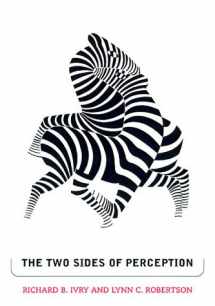
The Two Sides of Perception (Cognitive Neuroscience)
Book details
Summary
Description
Anatomically, the central nervous system looks remarkably symmetrical--from the relatively simple structures of the spinal cord to the extensively convoluted folds of the cerebral hemispheres. At the functional level, however, there are striking differences between the left and right hemispheres. Although popular writings attribute language abilities to the left hemisphere and spatial abilities to the right, differences in hemispheric function appear to be more subtle. According to Ivry and Robertson, asymmetries over a wide range of perceptual tasks reflect a difference in strength rather than kind, with both hemispheres contributing to the performance of complex tasks, whether linguistic or spatial.
After an historical introduction, the authors offer a cognitive neuroscience perspective on hemispheric specialization in perception. They propose that the two hemispheres differ in how they filter task-relevant sensory information. Building on the idea that the hemispheres construct asymmetric representations, the hypothesis provides a novel account of many laterality effects. A notable feature of the authors' work is their attempt to incorporate hemispheric specialization in vision, audition, music, and language within a common framework. In support of their theory, they review studies involving both healthy and neurologically impaired individuals. They also provide a series of simulations to demonstrate the underlying computational principles of their theory. Their work thus describes both the cognitive and neurological architecture of hemispheric asymmetries in perception.


We would LOVE it if you could help us and other readers by reviewing the book
Book review



